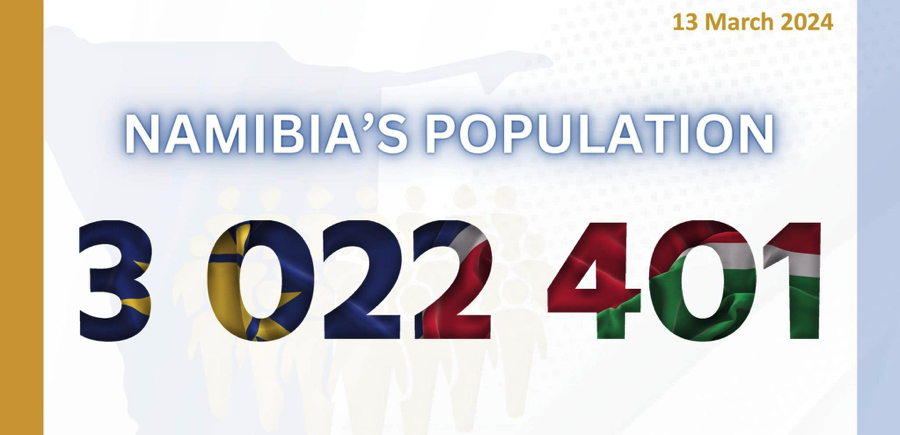NSA releases findings on 2023 Population & Housing Census Preliminary

The Namibia Statistics Agency has highlighted findings from the 2023 Population and Housing Census Preliminary Report which contains provisional results on population size and sex composition, population density and number of households by region. This exercise was Namibia’s first fully digital census to improve operational efficiency, enhance the quality of the data collected, and ability to release results promptly.
Key Takeaways
– The Namibia population figure from the 2023 PHC is 3.02 million people.
– The population has grown almost twofold since the first post-independence census was conducted in 1991.
– Females make up a greater proportion of the population in the 2023 PHC as has been the trend for the past four censuses.
– The population is growing, at an increasing rate compared with previous censuses.
– Khomas region remains the most populous region followed by Ohangwena and Omusati regions and these are similar trends as observed in the 2011 census.
– Omaheke region remains the nation’s least populous region.
– Average household size, which has been on the decline since 1991, is 3.8 persons per household.
The de facto population in Namibia on Census Reference Night was 3,022,401 and is made up of 1,548,177 females and 1,474,224 males. Overall, females make up 51.2% of the population and males 48.8%, giving a national sex ratio of 95 males for every 100 females. In all, 756,339 households were enumerated, with an average national household size of 3.8 persons. The national population density in the 2023 PHC is 3.7 persons per square kilometre. The population has increased by 909,324 people from the 2.1 million people recorded in 2011, constituting an annual intercensal growth rate of 3.0% per annum. This rate is double what was observed in the previous intercensal period (2001 to 2011 which was 1.4% per annum) and is the highest observed since independence. At this rate, by the year 2050 the population of Namibia would be over 6 million, all things being equal. b. The total number of households has grown by 291,500 (representing a 62.7% increase) over the 464,839 households enumerated in 2011. Household size decreased by 0.6 persons per household from 4.4 in the 2011 census.
Khomas region remains the most populous region in Namibia with a population of 494,729 people. Ohangwena region closely follows as the second most populous region with a population count of 337,729 people. These two regions are respectively four and three times bigger than the size of the least populous region, the Omaheke Region. Omusati is the third most populous region, with a population count of 326,671 people. //Kharas region and Erongo region recorded the smallest household size of 3.1 people per household while the largest household size was recorded in Kavango East and Kavango West Regions, with a household size of 5.3 and 5.5 respectively. In nine out of the 14 regions, households had less than four members, on average.
The region with the highest population density is Ohangwena with 31.5, persons per square kilometre, followed by Oshana region with 26.7 persons per square kilometre, and Khomas region with 13.4 persons per square kilometre. //Kharas Region, Hardap, and Kunene represent the most sparsely populated regions with 0.7 and 1.0 persons per square kilometre respectively.
The 2023 Population & Housing Census (PHC) instituted several data quality monitoring mechanisms and leveraged technology to implement interventions toward ensuring complete and accurate coverage. These included the use of GIS technology and geospatial resources, such as collecting the GPS coordinates of all structures, and the use of a census dashboard for real-time monitoring. These strategies made it possible to continuously assess data quality and correct errors and inconsistencies while enumerators were still on the field. The approach, and with public sensitization created an alert, enthusiastic, and proactive public leading to the avoidance of duplications and omissions as well as eliminating fabrications. Only aggregated data is reported and is the norm for the rest of the results under the Statistics Act (Act 9 of 2011). The Act places a legal restriction on publishing confidential information of individuals. All personal details are protected and removed from all publications and datasets to protect the confidentiality of respondents.
-NSA